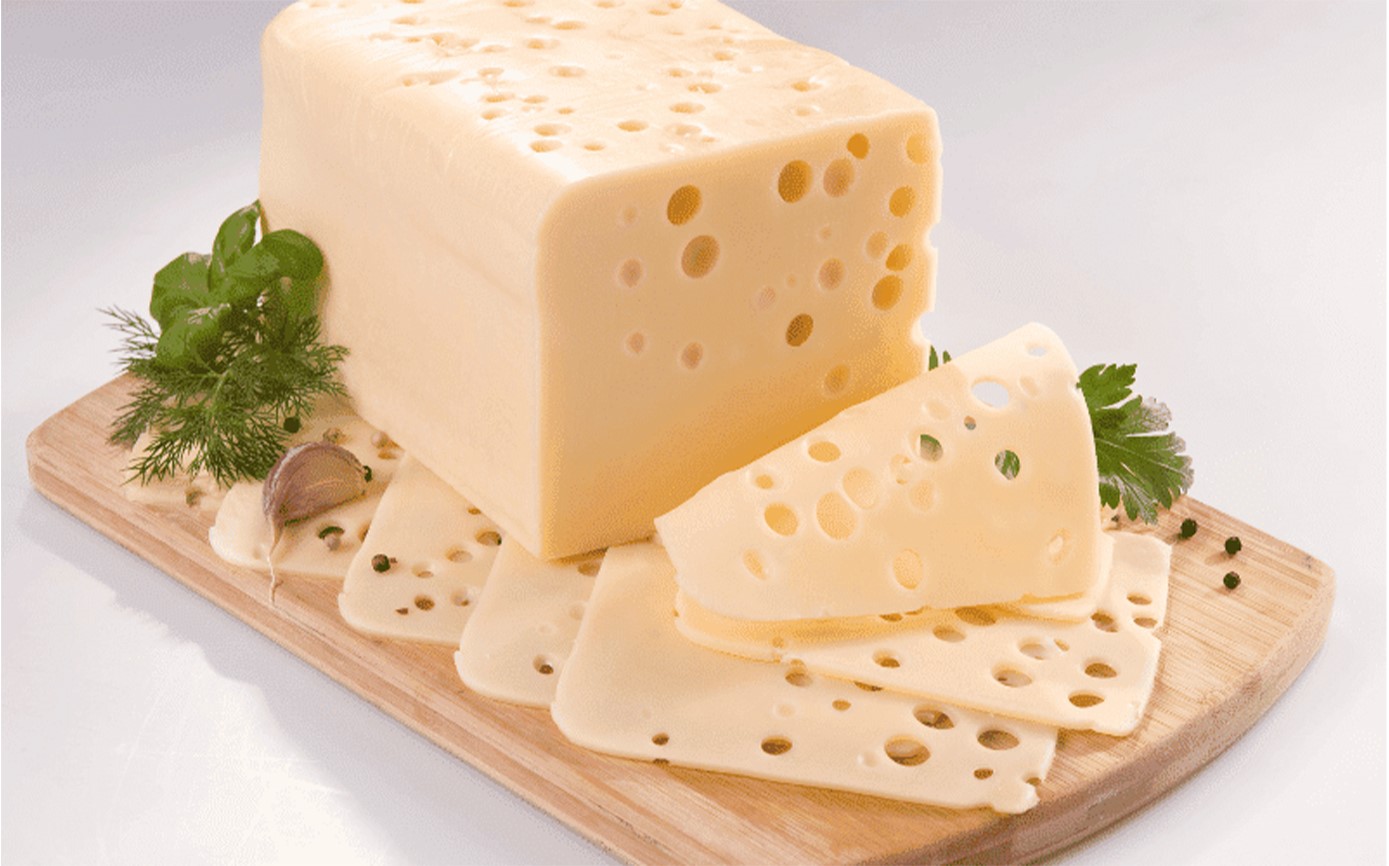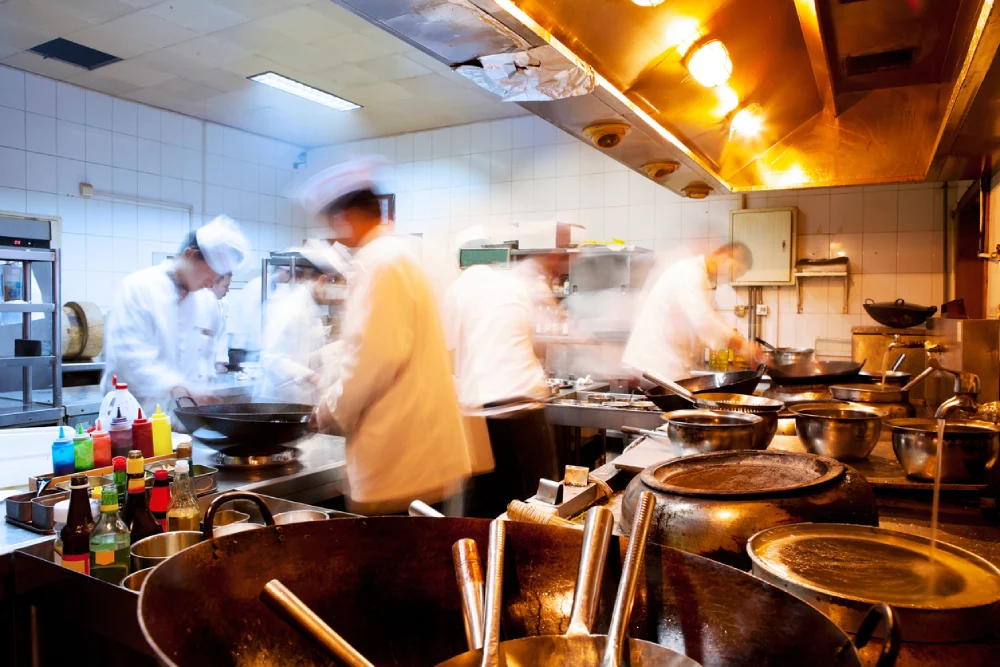By using our website, you agree to the use of cookies as described in our Cookie Policy
What Does Swiss Cheese Taste Like

The world of cheeses is vast, and each variety brings its unique flavor profile to the table. So, if you’ve ever wondered what does Swiss cheese taste like? — you are not the only one. In this blog, we’ll have an in-depth conversation about the savory goodness of Swiss cheese and the distinct characteristics that make it a beloved choice on cheese boards and in culinary creations.
The Origin of Swiss Cheese
Our exploration of the delightful taste of Swiss cheese requires us to journey back to its origins. Renowned for its landscapes and picturesque sceneries, Switzerland also boasts a rich tradition of cheese-making. Creating Swiss cheese involves century-old techniques passed down through generations.
Let’s look back into the history and traditional Swiss cheese-making methods that determine what Swiss cheese taste like:
Historical Background
The origins of Swiss cheese can be traced back to the 14th century and has a direct connection to the heart of Swiss culture. Swiss cheese draws inspiration from its alpine surroundings. Indeed, the relationship between the Swiss people and their mountainous landscape has profoundly influenced the cheese-making process.
Traditional Swiss Cheese-Making Techniques
The craftsmanship involved in Swiss cheese-making is a story of traditions passed down through generations. The skills and knowledge required to create this cheese have been meticulously preserved, creating a continuum that links modern cheese-makers to their ancestral roots. Let’s take a look at these time-honored techniques the Swiss have perfected:
The Art of Curdling and Draining
The magic begins in the cheese vat, where the milk undergoes curdling and draining. Traditional Swiss cheese-making involves a precise balance in curdling, ensuring the formation of curds that contribute to both texture and taste. In this stage, liquid milk is transformed and becomes the foundation of Swiss cheese.
Extended Aging
Unlike many other cheeses, Swiss cheese benefits from a patient aging process. This extended aging, which often lasts for months, allows the flavors to mature and intensify and contributes significantly to the nuanced taste popular to Swiss cheese enthusiasts.
Mastering Affinage
Refining and maturing cheese, referred to as affinage, is a key stage in Swiss cheese-making. It requires skillful monitoring of temperature, humidity, and time to ensure that each wheel of Swiss cheese reaches its peak of flavor and quality.
Alpine Influence on Milk Quality
Finally, the geographical charm of Switzerland plays a huge role in shaping the taste of Swiss cheese. The alpine meadows, where cows graze on lush grasses and wildflowers, impart a unique flavor to the milk. This alpine influence on milk quality becomes a fundamental building block in the creation of Swiss cheese.
Characteristics of Swiss Cheese
Before we get into what Swiss cheese tastes like, let’s take a closer look at the visual and sensory aspects that make this type of cheese unmistakable on any platter:
Appearance and Distinctive Holes
The visual appeal of Swiss cheese is unmistakable – a pale yellow hue decorated with characteristic holes known as "eyes." These holes aren’t merely aesthetic; they are crucial in defining the cheese's texture and imparting a distinct visual identity.
Texture and Feel
Swiss cheese offers a delightful texture that balances between creamy and firm. Exploring the feel of the cheese in your mouth is integral to understanding its taste. The interaction between the smoothness and occasional small, crystalline crunches adds depth to the overall sensory experience.
Aroma: Mild vs. Strong
While Swiss cheese isn’t renowned for its pungent aroma, subtle nuances contribute to its overall character. Exploring these delicate scents can help us appreciate the cheese's mild yet distinctive fragrance, setting the stage for the tasting journey.
Flavor Profile of Swiss Cheese
Now, let's get to the heart of the matter – the taste of Swiss cheese. Its flavor profile is a harmonious blend of various elements that dance on the taste buds. From mild sweetness to nutty undertones and a hint of tanginess, we'll break down the components that make Swiss cheese a culinary delight:
Mild Sweetness
The flavor profile of Swiss cheese features a mild sweetness that caresses your taste buds. It’s not overpowering but adds a pleasant note, making the cheese appealing to a broad audience. It is also this delicate touch that distinguishes Swiss cheese from its counterparts.
Nutty Undertones
As we go further into our taste journey, we’ll encounter nutty undertones contributing to the complexity of Swiss cheese. These subtle, earthy notes, reminiscent of roasted nuts, add depth and character. They create a satisfying balance, making Swiss cheese not just a simple dairy product but a certified hit for the taste buds.
Slight Tanginess
To complete the flavor profile, Swiss cheese introduces a slight tanginess. This touch of acidity adds a refreshing zing, elevating the overall taste experience. The gentle tanginess distinguishes Swiss cheese, providing an ideal contrast to the mild sweetness and nutty undertones. Together, these elements create a trifecta of flavors that make Swiss cheese a culinary masterpiece.
As you savor the next bite of Swiss cheese, pay attention to how these elements play together, creating a sensory adventure that is as delightful as it is distinctive.
Popular Varieties of Swiss Cheese
Swiss cheese comes in delightful varieties, each with its unique characteristics. In this closing section, let’s explore the most popular kinds and understand how their qualities contribute to the world of culinary delights:
Emmental
With its characteristic large holes and pale yellow hue, Emmental is a Swiss cheese classic. Known for having a mild, slightly sweet taste, it captivates with nutty undertones. The aging process enhances these flavors, making it a versatile choice for both snacking and culinary creations.
Pairing Suggestions
Pair Emmental with crisp apples or juicy pears for a delightful contrast. Its meltability also makes it a perfect choice for fondues and sandwiches.
Gruyère
Gruyère has a rich history dating back centuries. It offers a savory and slightly sweet taste with a firm texture and robust flavor, making it a favorite in many dishes.
Pairing Suggestions
Pair Gruyère with a bold red wine or enjoy it in a classic French onion soup. Its versatility extends to gourmet sandwiches and gratins.
Appenzeller
A cheese with a bold and robust personality, Appenzeller brings a unique twist to the Swiss cheese family. Its taste is characterized by a strong nuttiness, complemented by herbal and floral undertones. The result is a cheese that leaves a lasting impression on the palate.
Pairing Suggestions
You can have Appenzeller with crusty bread and pickles for a delightful snack. Its robust flavor makes it an excellent choice for hearty sandwiches and cheese boards.
Wrapping Up
During this quest to find out what Swiss cheese tastes like, we have uncovered a symphony of flavors ranging from mild sweetness to nutty undertones and a subtle tanginess.
Now, it's your turn to try Swiss cheese in your kitchen. Make sure to explore pairings, try new recipes, and share the delight with your loved ones. Get started today and let the richness of Swiss cheese elevate your palate!
What Does Swiss Cheese Taste Like
‹ Back







